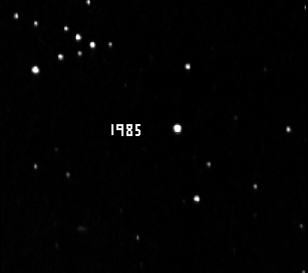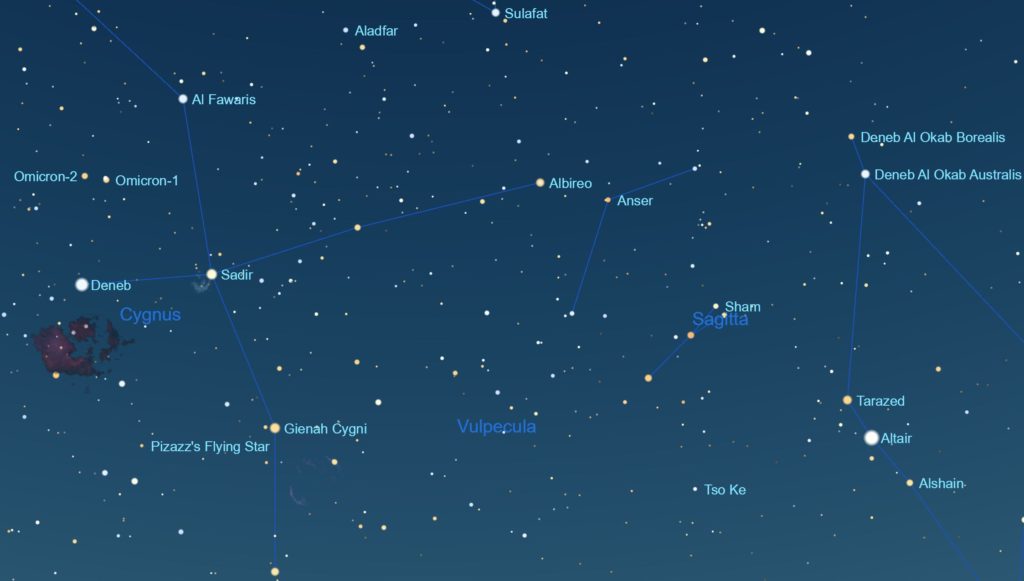Like the drift of the continents or the erosion of great mountain ranges on Earth, the motion of the stars across the sky is almost imperceptibly small over the paltry span of a human lifetime. But in this quite astonishing video made with data from the European Space Agency’s (ESA’s) Gaia spacecraft, which compresses 5 million years of star motion into a few minutes, you can see more than 2 million stars move across the sky like grains of pollen floating in a breeze. It is mesmerizing (and unexpectedly calming).
This video is the culmination of nearly 300 years of discovery. Until the dawn of the Enlightenment, most astronomers believed, as Aristotle declared nearly two thousand years earlier, that the stars were fixed and unchanging, if for no other reason than they appeared so. But in the 18th century, Edmund Halley, during one of his star mapping expeditions to St. Helena in the south Atlantic, noticed the position of the bright star Arcturus differed noticeably from that noted in the 2nd century B.C. by the ancient Greek astronomer Hipparchus. He called this apparent motion the “mutability of the fixed stars”. We now call it proper motion, the apparent motion of a star across the celestial sphere.
Because of a perspective effect, only the closest or quickest stars exhibit a measurable proper motion. In a sense, Halley’s discovery of proper motion was a stroke of good luck because Arcturus is one of the few bright stars with a large proper motion. Located in the constellation Boötes, Arcturus is a prominent star, the 4th-brightest star in the sky, with a magnitude of -0.05. It’s about 37 light years away and moves across the sky at a rate of 2.3″ (arc-seconds) per year, so it’s not one of the closest stars to Earth. But Arcturus moves quickly through the galaxy at a speed of about 122 km/s from our point of view. Two million years ago it was in the constellation Cepheus more than 800 light years away and nearly 400 times fainter. In another two million years, it will fade to 7th magnitude as it hurtles towards a point in the constellation Vela. The Sun, by comparison, moves at about 30 km/s relative to the nearby stars in this part of the galaxy, and about 220 km/s in its orbital motion around the center of the Milky Way.
There are many faster-moving stars as well, although none are as bright as Arcturus. With a small telescope and a keen eye, or a camera, attentive backyard stargazers can see some these stars change their position over the course of a few years or less. Barnard’s Star, a red dwarf just 6 light years away, has a proper motion 10.3”(arc-seconds) per year. In stellar terms, that’s cookin’. The planet Jupiter, for example, is about 50” across at opposition, so a 10” motion against the background stars is noticeable (see below). You can glimpse this 9th magnitude star with binoculars in the northern summer constellation Ophiuchus, and you can see it easily in nearly any telescope.

Piazzi’s Flying Star is an even easier find. Also called 61 Cygni, this binary star shines at 6th magnitude and lies about 11.4 light years away. It moves about 5” across the sky each year.
Groombridge 1830, a star below the bowl of the Big Dipper, is another 6th-magnitude star with high proper motion. This yellow star lies nearly 30 light years away and moves about 320 km/s through the galaxy, more than twenty times the average proper motion of nearby stars. Because of its odd chemical composition, astronomers suspect this little star is a visitor from the inner reaches of the galaxy.
Proper motion across the sky is only one aspect of a star’s true motion. The other is radial velocity, the speed at which a star is moving towards or away from our line of sight. Some stars have very small proper motion but a large radial velocity. The little 10th-magnitude star Gliese 710, for example, which lies about 65 light years away in Cassiopeia, is speeding almost directly towards us, and at a rapid clip. In 1.3 million years, the star may pass just 0.1 light years from Earth and grow as bright as the planet Jupiter. As it passes it may stir up the dirty snowballs in the Oort cloud and send thousands of comets into the inner solar system over hundreds of thousands of years. These comets will put on a spectacular celestial show, and at least a few may have the potential to hit the Earth.

Since Edmund Halley’s time, astronomers have measured the proper motion of dozens, then hundreds, then thousands of stars. ESA’s Hipparcos satellite, named in part after the ancient astronomer, and now the Gaia satellite, have extended these measurements to millions of stars. The video at the top of this page was made with the first rounds of data from the spacecraft captured in 2015. Further data will capture the motion of many more stars.
To help you get a frame of reference in the above video, note that you can see the constellation Orion at extreme right, just below the plane of the Milky Way. At extreme left, again below the plane, lies the Pleiades star cluster. The little clutch of stars above and to the right of the Pleiades is the Alpha Persei moving group that congregate around the star Mirfak in the constellation Perseus.
Again, because of the effect of perspective, the stars that move in this video are relatively nearby. The most distant stars in the plane of the Milky Way appear to move more slowly or not at all. You may also notice the stars in the plane of the Milky Way appear to move to the right. That’s because the stars’ positions and motions are measured from the frame of reference of the Earth, and the Earth itself moves around the galactic center. In the 5-million-year period modeled in this video, the Earth covers about 2% of its 250-million-year orbital period around the Milky Way.
Share This: